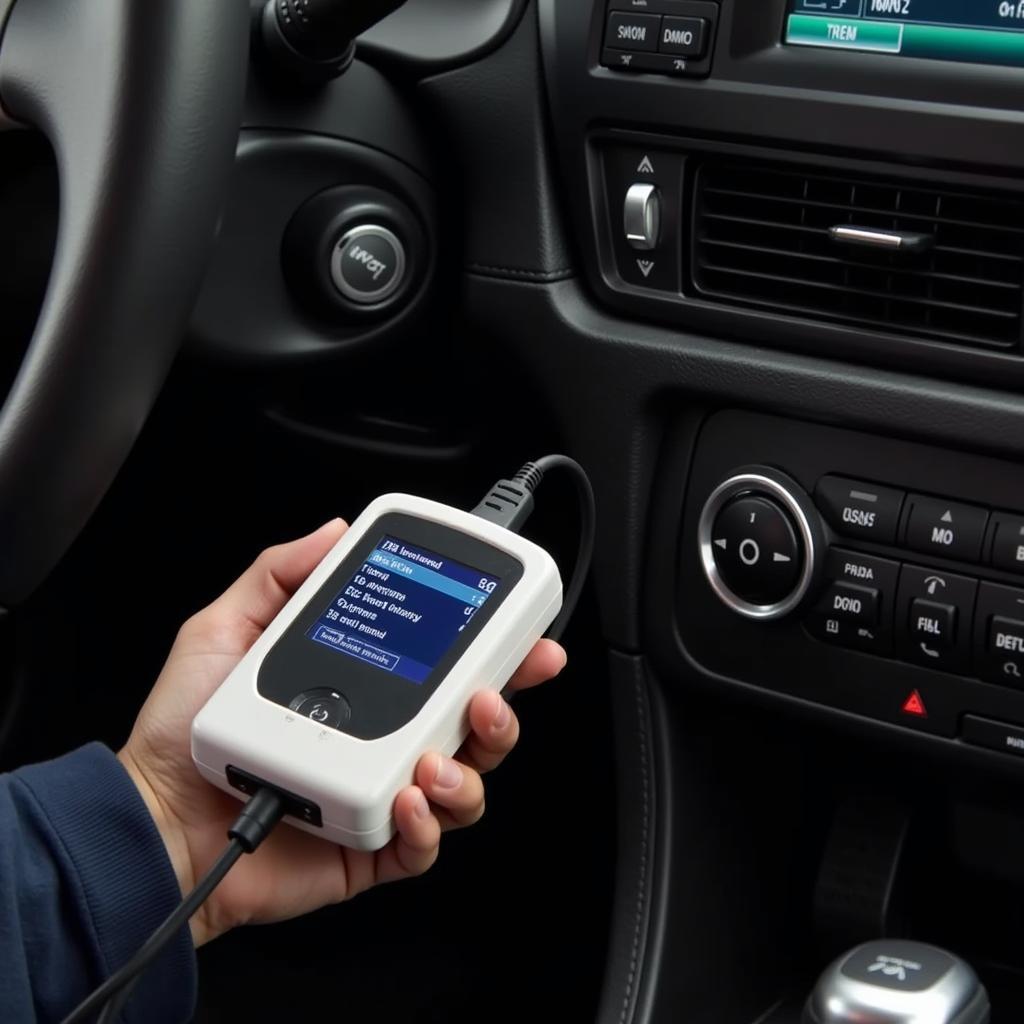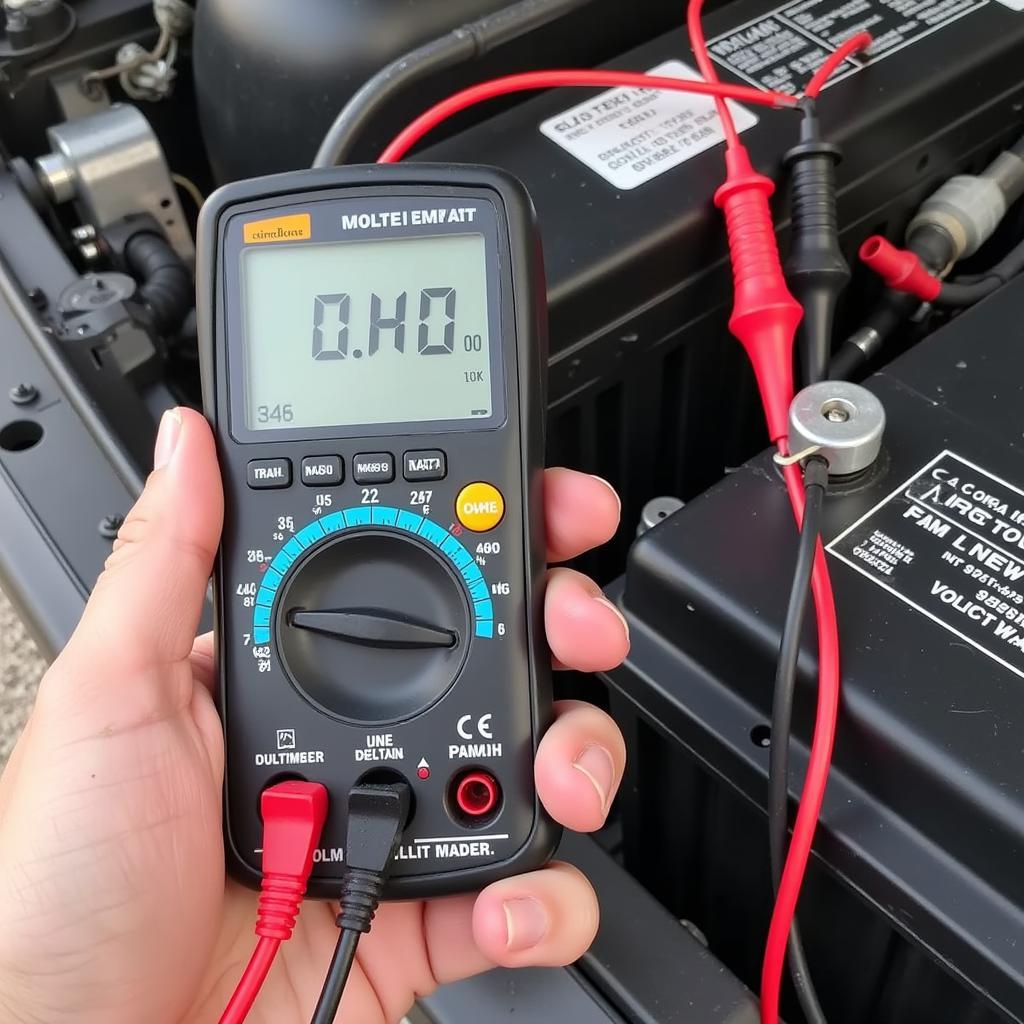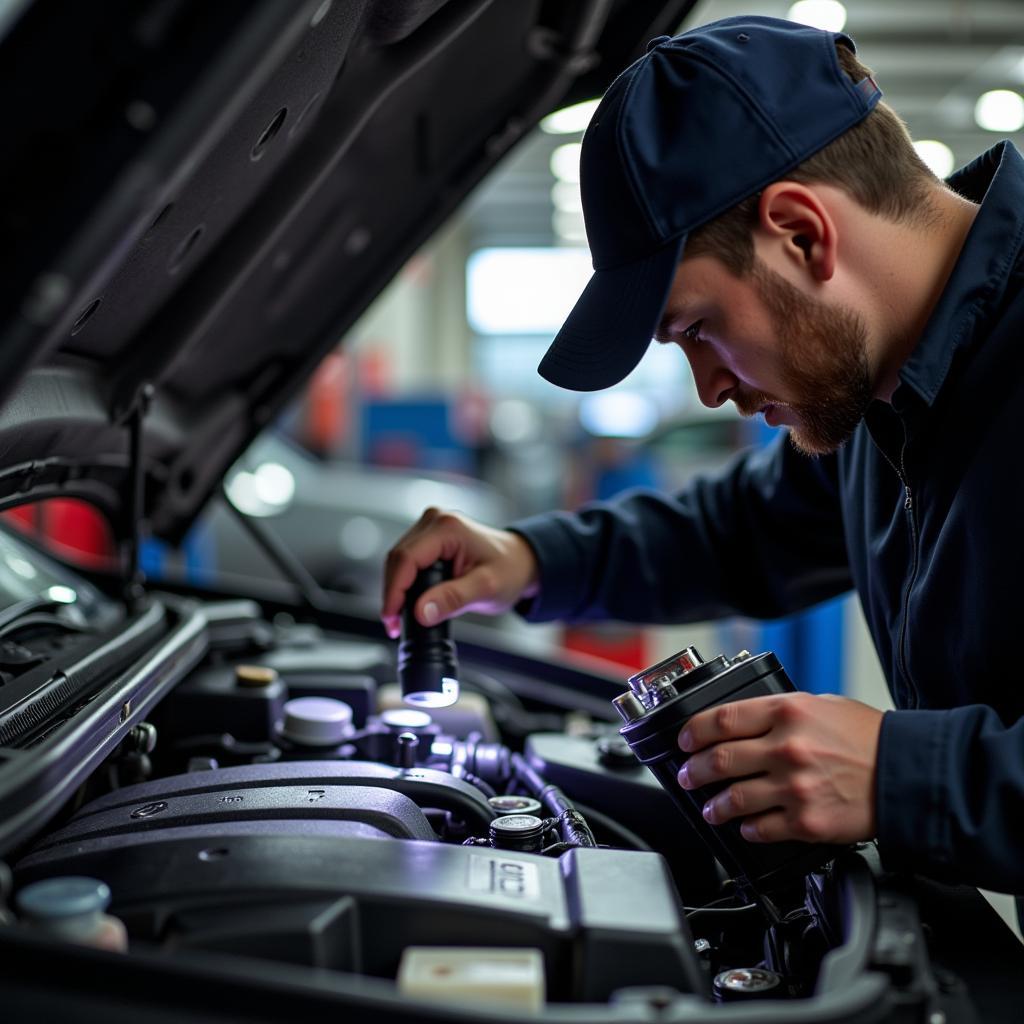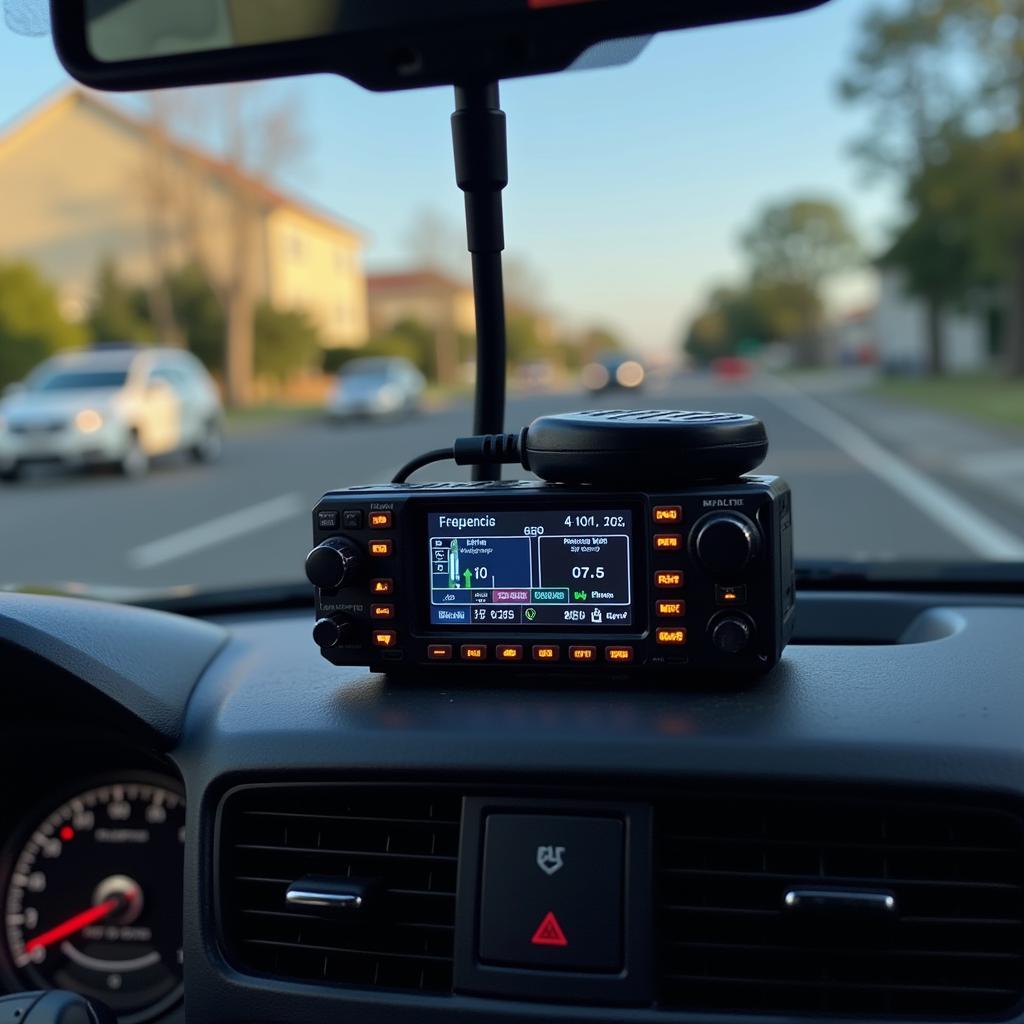Your car won’t start, and you’ve got your OBD2 scanner in hand. A smart move! This little device can be your best friend in diagnosing why your engine is refusing to cooperate. Let’s dive into how to use your OBD2 scanner effectively when your car won’t start. You can learn more about using an how to use obd2 scanner on a car.
Understanding the OBD2 Scanner and Why Your Car Won’t Start
An OBD2 scanner, or On-Board Diagnostics scanner, is a powerful tool that connects to your car’s computer system. It retrieves diagnostic trouble codes (DTCs) that pinpoint potential issues. These codes can range from simple sensor malfunctions to more complex engine problems. When your car won’t start, an OBD2 scanner can quickly narrow down the possibilities.
It’s important to understand that while an OBD2 scanner can identify the source of the problem, it won’t fix it. Think of it as a detective, not a mechanic. It gives you the clues you need to determine the next steps in getting your car running again.
If your scanner is having connectivity problems, check out this article on obd2 scanner won’t connect to car.
 OBD2 Scanner Connected to Car's Diagnostic Port
OBD2 Scanner Connected to Car's Diagnostic Port
Common Reasons Your Car Won’t Start and Corresponding OBD2 Codes
Several issues can prevent your car from starting, and your OBD2 scanner can help pinpoint the culprit. Here are a few common problems and the related codes you might see:
- Crankshaft Position Sensor (CKP) Failure: The CKP sensor tells the engine control unit (ECU) the position of the crankshaft. A faulty sensor can prevent the engine from starting. Common codes: P0335, P0336.
- Camshaft Position Sensor (CMP) Issues: The CMP sensor monitors the camshaft’s position. Problems with this sensor can also lead to starting issues. Common codes: P0340, P0341.
- Fuel Pump Problems: A failing fuel pump won’t deliver fuel to the engine, resulting in a no-start condition. Common codes: P0230, P0231.
- Ignition System Malfunction: Issues with the ignition coil, spark plugs, or distributor can prevent the engine from igniting the fuel. Common codes: P0300, P0301-P0308, P0351-P0358.
- Immobilizer System Problems: A malfunctioning immobilizer system might prevent the engine from starting as an anti-theft measure. Common codes: P1631, P1630.
 Testing Car Battery Voltage with a Multimeter
Testing Car Battery Voltage with a Multimeter
How to Use an OBD2 Scanner When Your Car Won’t Start
- Locate the OBD2 Port: The OBD2 port is typically located under the dashboard on the driver’s side.
- Connect the Scanner: Plug the OBD2 scanner into the port.
- Turn the Ignition On: Turn the key to the “on” position without starting the engine.
- Read the Codes: The scanner will power up and begin communicating with the car’s ECU. Follow the scanner’s instructions to retrieve the DTCs.
- Interpret the Codes: Once you have the codes, use a reliable source to interpret their meaning. You can consult a repair manual, online database, or a professional technician.
You can use a computer program scan tool for deeper diagnostics.
Beyond the OBD2 Scanner: Further Diagnostics
If the OBD2 scanner points to a specific system, you can perform further diagnostics to pinpoint the exact problem. For example, if the codes suggest a fuel pump issue, you can check the fuel pressure. If the codes indicate an ignition problem, you can test the spark plugs. For information about scanning car wiring, visit our page on car wiring scanner.
“Remember, a thorough diagnosis is crucial before replacing any parts. Jumping to conclusions can lead to unnecessary expenses and frustration,” advises John Smith, ASE Certified Master Technician.
 Mechanic Performing a Visual Inspection of a Car Engine
Mechanic Performing a Visual Inspection of a Car Engine
What if the OBD2 Scanner Shows No Codes?
Sometimes, a car won’t start, and the OBD2 scanner shows no codes. This can happen for various reasons, such as a dead battery, a faulty starter, or a wiring issue. In these cases, you’ll need to perform some basic troubleshooting steps. Check the battery voltage, inspect the starter connections, and look for any loose or damaged wiring. For help with a scanner on the back of your car, see scanner on the back of car.
“Even if your OBD2 scanner doesn’t reveal any codes, it doesn’t mean there’s nothing wrong. Sometimes, mechanical problems won’t trigger a code,” says Maria Garcia, Automotive Engineer.
Conclusion
An OBD2 scanner can be an invaluable tool when your car won’t start. It can help you quickly identify the potential cause of the problem and guide your troubleshooting efforts. However, remember that the scanner is just one piece of the diagnostic puzzle. A thorough inspection, along with a clear understanding of the codes and their implications, is essential for getting your car back on the road. If you need further assistance, contact ScanToolUS at +1 (641) 206-8880 or visit our office at 1615 S Laramie Ave, Cicero, IL 60804, USA.

